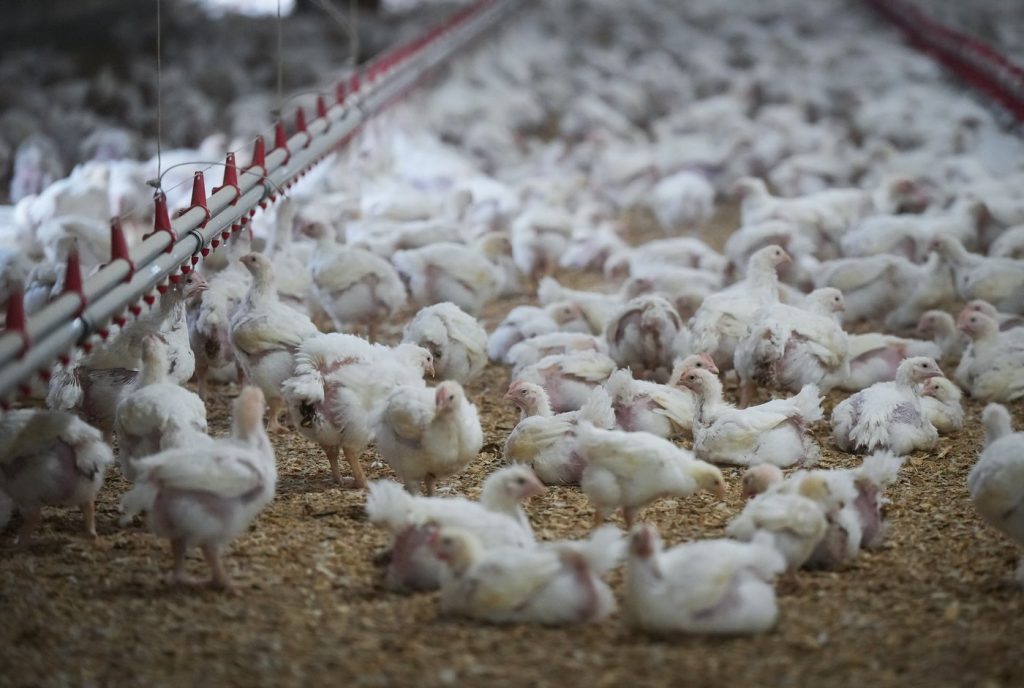The Canadian Food Inspection Agency (CFIA) has published a document detailing procedures for culling ostriches, which includes methods such as breaking their necks, lethal injection, gassing, and shooting. Although the CFIA has declined to comment on specific procedures regarding a potential cull at an ostrich farm in British Columbia, an internal manual from 2016 has surfaced, outlining various euthanasia strategies for ostriches.
The manual describes lethal injection as a quick and minimally stressful method for the birds, although it may be emotionally difficult for their owners to witness. This process requires three individuals: one to restrain the bird by sitting on its back, a second to hold its head, and a third to administer the injection. The manual notes that an “intercranial injection” is a preferred method to ensure minimal stress for the ostrich.
The CFIA document was made public in July 2023 through an access-to-information request, later shared by the Investigative Journalism Foundation. As of now, the CFIA has not verified the authenticity of this manual. Meanwhile, the Supreme Court of Canada is set to make a ruling regarding the appeal by Universal Ostrich Farms against a cull of over 300 birds, ordered in December 2023 due to an avian flu outbreak at their facility in Edgewood, southeastern British Columbia.
In recent months, protests against the planned culling have diminished in number, but a small contingent remains at the farm as the court decision approaches. A number of trailers are stationed on the property, amid inclement weather characterized by cold, slushy rain. CFIA officials previously visited the farm with the support of Royal Canadian Mounted Police (RCMP) officers, leading to heightened tensions at the site.
The manual outlines other euthanasia methods, including injecting lethal drugs into an ostrich's right jugular or wing vein, which can take effect within 2 to 10 seconds. Given the size and potential danger posed by ostriches, particularly males during mating season, the document advises the use of sedation prior to euthanasia. This can be achieved through intramuscular injection or by using darting techniques.
According to the CFIA guidelines, the birds should be lured into a restrained position using food and then hooded to facilitate sedation before euthanasia. The manual touches briefly on gassing, noting that while carbon dioxide gas can be used in a sealed chamber, it is deemed slower and more stressful for the birds compared to other methods.
Gunshots are recommended only as a last resort for euthanasia, while cervical dislocation—a method that involves breaking the neck—is also listed, especially for larger birds like ostriches and emus. However, the manual emphasizes that this method is physically demanding, requiring trained personnel capable of performing it swiftly.
The impending Supreme Court decision could either lift the stay on the cull or grant a hearing for a final conclusion regarding the fate of the ostrich flock. Universal Ostrich Farms has garnered support from notable figures such as U.S. Health Secretary Robert F. Kennedy Jr., who has urged the CFIA to reconsider the culling order, and Dr. Mehmet Oz, who has offered his ranch in Florida to relocate the birds.
It is important to note that the CFIA manual is not publicly accessible without a formal request, although some matching details can be found on a government website. The Investigative Journalism Foundation routinely files requests for records released under the access-to-information system and subsequently uploads them to a public database.
The news around the cull and the CFIA’s procedures has drawn significant media attention and raised ethical questions regarding animal welfare and the implications of culling in the face of disease outbreaks.











